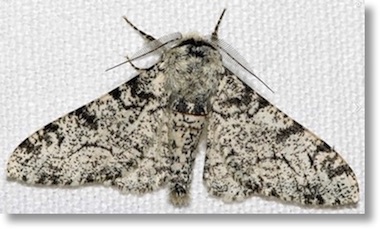866-295-4143, fbns@wayoflife.org
“Darwinism does not look you squarely in the eye” (Michael Pitman, Adam and Evolution, p. 217).
“When our leading scientists have to resort to the sort of distortion that would land a stock promoter in jail, you know they are in trouble” (Phillip Johnson, The Wall Street Journal, 1999).
“Forgeries and frauds are not all that uncommon in the science world” (Paul Chambers, Bones of Contention, p. 248).
“I believe that one day the Darwinian myth will be ranked the greatest deceit in the history of science” (Soren Lovtrup, Darwinism: The Refutation of a Myth).
“The impression that scientists think rationally and fairly is a simplistic myth. The fact is they are subject to the same human failings as the rest of us. Looking inside the ivory towers we find the familiar power establishments, personality conflicts, and intellectual blind spots brought about by philosophical presuppositions” (Ian Taylor, In the Minds of Men, p. 280).
“Within the English-speaking world, Darwin’s theory of evolution remains the only scientific theory to be widely championed by the scientific community and widely disbelieved by everyone else. No matter the effort made by biologists, the thing continues to elicit the same reaction it has always elicited: You’ve got to be kidding, right?” (David Berlinski, The Devil’s Delusion, p. 186).
Lying art.

One of the most repeated icons for evolution is the peppered moth, Biston betularia.
In the book New Guide to Science, Isaac Asimov devoted a small section to proving Darwinian evolution and his sole evidence was the peppered moth. Stephen Jay Gould also used the peppered moth as one of the supposed indisputable evidences for evolution (Hen’s Teeth and Horse’s Toes, p. 257).
The following statement from Biology: The Dynamics of Life by Merrill Publishing is typical of the way that textbooks use the peppered moth as a major evidence of evolution:
“The evolution of new species is seldom observed because the changes usually require many generations However, scientists have observed many examples of the natural selection of adaptations. One of the best-studied examples involves the peppered moth in England. During the 1800s, there were two kinds of peppered moths--a common light-colored variety and a rarer dark-colored variety. These moths rested during the day on light-colored tree trunks. In 1850, almost all the moths were light in color. Then, during a rapid expansion of industry around that time, the air became full of smoke and soot. This extreme pollution of the air turned the trunks of trees black. By the end of the century, most of the peppered moth population in England was dark colored. The light-colored individuals had become rare. ... In 1950, scientists performed an experiment to determine if natural selection had caused the dark variety of months to become more numerous. They observed light and dark moths in both industrial and rural areas. The experiment showed that birds ate more dark moths in rural areas where the trees were light-colored and more light moths in industrial areas where the trees were dark-colored. Through natural selection, populations of peppered moths had become adapted to living in industrial areas. The experiment showed that organisms whose color provides better camouflage are more likely to survive and reproduce” (Biology: The Dynamics of Life, Merrill Publishing, 1991, p. 209).
Thus, in a short time the population of peppered moths in that area changed from predominately light gray to predominately dark colored. The “new” moth was even given a new name, Biston betularia carbonaria, a supposed new “subspecies.”
The proposed explanation was that the industrial pollution had killed the light-colored lichen on the trees where the moths rested, and the light-colored moths could therefore be seen easily against the natural brown of the tree’s bark. Thus, the light-colored moths were eaten by predators while the dark-colored ones survived and increased.
This “evidence” for evolution was devised by Bernard Kettlewell. His objective in quitting his 15-year medical practice was to prove evolution by studying the peppered moth. So much for unbiased science!
In Scientific American magazine, Kettlewell proclaimed that he had discovered “Darwin’s missing evidence.”
Kettlewell published a photo that became a major icon of evolution and influenced countless people to believe that Darwinian evolution is true. It is the picture of two peppered moths seemingly resting on a tree trunk.
The peppered moth is supposed to be proof of the Darwinian mechanism of “survival of the fittest” or “natural selection,” but there are serious problems with this evolutionary icon.
1. The adaptation of a species to its environment and the variety that can be exhibited within a species do not explain Darwinian evolution of life.
Variety within a species is not evidence for transmutation from one kind of creature to another! Natural selection might sometimes account for different colors of peppered moths and different sizes of dogs and different shapes of beaks on a finch, but it cannot account for life coming into existence or a wolf becoming a whale or a reptile becoming a bird. No matter what an evolutionist might say about light- and dark-colored peppered moths, they are all still moths. In fact, they are still peppered moths. No new color was even produced, because the dark-colored moths already existed.
Adaptability of species is not evidence for Darwinian evolution, but it does fit perfectly into the biblical model of creation by an all-wise God who designed the creatures to adapt to changing environments on a fallen earth.
2. Kettlewell and others were guilty of doctoring the evidence.
The aforementioned photograph of moths resting on a tree trunk has influenced the thinking and philosophy of countless people, encouraging them to believe in Darwinian evolution. As it is said, “one picture is worth a thousand words.” The trouble is that it was a fake. It turns out that peppered moths don’t naturally rest on tree trunks. The moths were glued to the tree trunk!
“After more than fifty years it is now admitted that these moths do not rest on tree trunks; in fact, no one is sure where they rest. The well-known photograph of the black and white species together that appears in every high-school textbook was taken using two moths glued to a tree trunk” (Ian Taylor, In the Minds of Men, p. 168).
Jonathan Wells, Ph.D. in cell biology, gives further refutation to the peppered moth myth:
“Since 1980, evidence has accumulated showing that peppered moths do not normally rest on tree trunks. Finnish zoologist Kauri Mikkola reported an experiment in 1984 in which he used caged moths to assess normal resting places. Mikkola observed that ‘the normal resting place of the peppered moth is beneath small, more or less horizontal branches (but not on narrow twigs), probably high up in the canopies... In twenty-five years of field work, Cyril Clarke and his colleagues found only one peppered moth naturally perched on a tree trunk. ...
“Manually positioned moths have also been used to make television nature documentaries. University of Massachusetts biologist Theodore Sargent told a Washington Times reporter in 1999 that he once glued some dead specimens on a tree trunk for a TV documentary about peppered moths (The Washington Times, Jan. 17, 1999). Staged photos may have been reasonable when biologists thought they were simulating the normal resting-places of peppered moths. By the late 1980s, however, the practice should have stopped. Yet according to Sargent, a lot of faked photographs have been made since then” (Wells, Icons of Evolution, pp. 149, 150, 151).
Wells concludes,
“Open almost any biology textbook dealing with evolution, and you’ll find the peppered moth presented as a classical demonstration of natural selection in action--complete with faked photos of moths on tree trunks. This is not science, but myth-making” (Icons of Evolution, p. 155).
- Receive these reports by email
- www.wayoflife.org
______________________
Sharing Policy: Much of our material is available for free, such as the hundreds of articles at the Way of Life web site. Other items we sell to help fund our expensive literature and foreign church planting ministries. Way of Life's content falls into two categories: sharable and non-sharable. Things that we encourage you to share include the audio sermons, O Timothy magazine, FBIS articles, and the free eVideos and free eBooks. You are welcome to make copies of these at your own expense and share them with friends and family. You may also post parts of reports and/or entire reports to websites, blogs, etc as long as you give proper credit (citation). A link to the original report is very much appreciated as the reports are frequently updated and/or expanded. Things we do not want copied and distributed are "Store" items like the Fundamental Baptist Digital Library, print editions of our books, electronic editions of the books that we sell, the videos that we sell, etc. The items have taken years to produce at enormous expense in time and money, and we use the income from sales to help fund the ministry. We trust that your Christian honesty will preserve the integrity of this policy. "For the scripture saith, Thou shalt not muzzle the ox that treadeth out the corn. And, The labourer is worthy of his reward" (1 Timothy 5:18). Questions? support@wayoflife.org
Goal:Distributed by Way of Life Literature Inc., the Fundamental Baptist Information Service is an e-mail posting for Bible-believing Christians. Established in 1974, Way of Life Literature is a fundamental Baptist preaching and publishing ministry based in Bethel Baptist Church, London, Ontario, of which Wilbert Unger is the founding Pastor. Brother Cloud lives in South Asia where he has been a church planting missionary since 1979. Our primary goal with the FBIS is to provide material to assist preachers in the edification and protection of the churches.
Offering: Offerings are welcome if you care to make one. If you have been helped and/or blessed by our material offerings can be mailed or made online with with Visa, Mastercard, Discover, or Paypal. For information see: www.wayoflife.org/about/makeanoffering.html.





